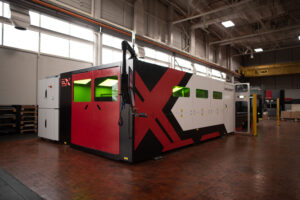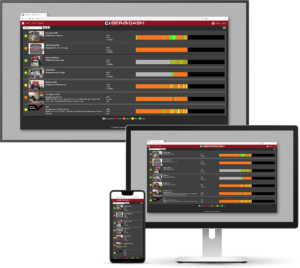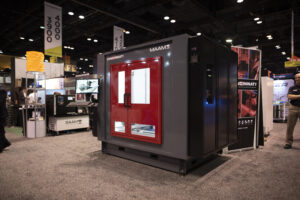 Originally known as the Cincinnati Shaper Company, it was founded in 1898 by Perrin March in Harrison, Ohio. The company was eventually renamed Cincinnati, Inc. (CI), and it remains a privately held company by the March family.
Originally known as the Cincinnati Shaper Company, it was founded in 1898 by Perrin March in Harrison, Ohio. The company was eventually renamed Cincinnati, Inc. (CI), and it remains a privately held company by the March family.
The initial product line consisted of metalworking shapers, gear cutting machined, hobbing machines, cutter grinders, and gear burnishing machines as the primary focus. Today’s product line has shifted and grown substantially to include cutting-edge laser technology, press brakes, automation, shears, PM presses, additive manufacturing, and software. Its products are manufactured at its Harrison plant and distributed throughout the world. CI goes to market via strategically located sales engineers and service technicians throughout the U.S. and Canada, as well as distribution in Mexico, Australia, and the UK. More than 57,000 machines have been sold worldwide.
According to Nikki Stenzel, marketing specialist, “We’ve also addressed the growing trend of IIoT by creating CIberDash, which is a revolutionary new software technology that allows users to access real-time data on all of their CI machines from any device. This information can be used to increase the efficiency of the machine, as well as identify areas of improvement.
 “We’ve also listened to our customers and created a first-of-its-kind fiber laser, the CLX, that encompasses all of the latest engineering and productivity features as well as the CI ruggedness that our customers expect from us,” she says. “The laser was unveiled this year at FABTECH, where it generated a great deal of interest.”
“We’ve also listened to our customers and created a first-of-its-kind fiber laser, the CLX, that encompasses all of the latest engineering and productivity features as well as the CI ruggedness that our customers expect from us,” she says. “The laser was unveiled this year at FABTECH, where it generated a great deal of interest.”
In addition to close relationships with its customers, CI also collaborates with academia, recently announcing a partnership with Ohio State University’s Center for Design and Manufacturing Excellence (CDME). CI has provided the center with one of its Medium Area Additive Manufacturing (MAAM) printers, an industrial-sized additive machine built for production manufacturing. Researchers and students will now be better equipped to advance additive manufacturing technology.
“CIs MAAM printer expands the diversity of printers we have to offer at CDME,” CDME Executive Director Nate Ames says. “The ability to 3D print ULTEM, PEEK, and PEKK at meter-scale opens up a new world of manufacturing opportunities.
“CDME facilitates innovation for a wide breadth of advanced manufacturing practices,” Ames says “The center’s novel approach to applied engineering, technology translation and workforce development is executed in our 32,000 s quare-foot advanced manufacturing facility at our West Campus. The center houses more than $5 million worth of additive manufacturing equipment, including industrial 3D printers capable of processing metals, polymers, composites, biomaterials, and ceramics.”
quare-foot advanced manufacturing facility at our West Campus. The center houses more than $5 million worth of additive manufacturing equipment, including industrial 3D printers capable of processing metals, polymers, composites, biomaterials, and ceramics.”
“Ohio State provides the engineering resources and experience in additive manufacturing that will help CI further develop MAAM’s potential in material and parameter development, as well as discovering new applications for the technology,” according to Alex Riestenberg, additive manufacturing product manager at CI. “Having a partner like OSU just two hours away from our headquarters provides logistics advantages for our team and easy access for potential customers.”
With a stated goal of enhancing America’s manufacturing competitiveness, CDME allows undergraduate students to work in a manufacturing environment that matches what they’ll experience after graduation and in their careers. That experience includes leveraging the latest 3D printing equipment and tools, including the MAAM machine.
This is just one example of the types of collaborations CI engaged in, keeping it at the forefront of the markets it serves.


















